Biomimicry has emerged as a powerful driving force in contemporary design, inspiring innovative solutions that draw from the natural world. This approach encourages designers to look beyond traditional aesthetics and functionality, fostering a deeper connection to the ecosystems that surround us. In this exploration, we will delve into the work of three visionary designers, each of whom is reimagining the relationship between humanity and nature through their creations. Together, their work champions a future where design not only serves human needs but also nurtures our planet.
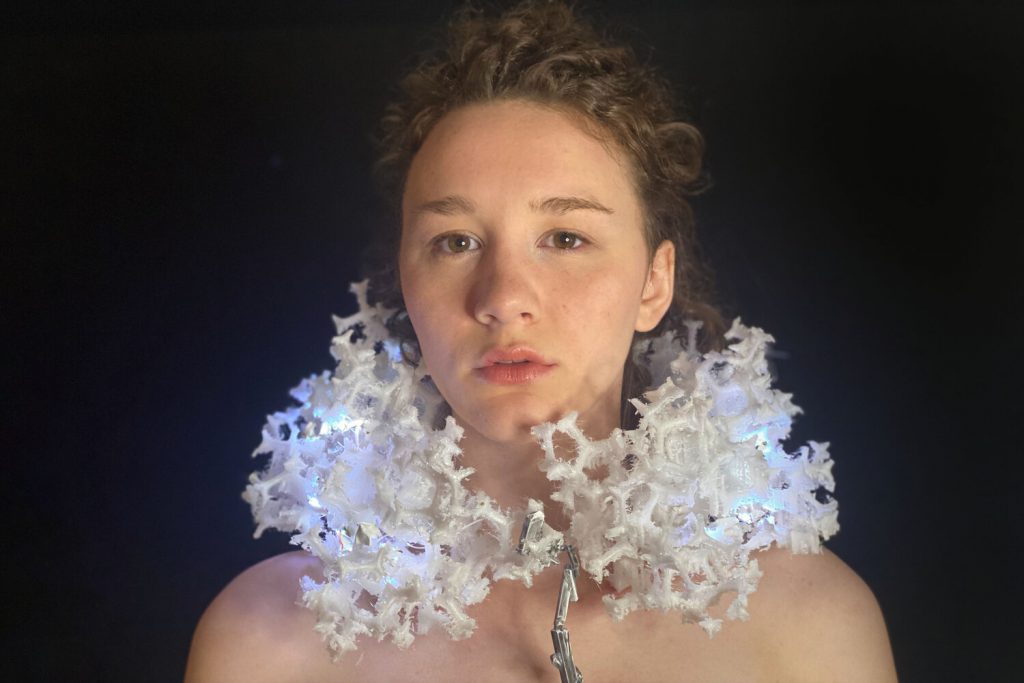
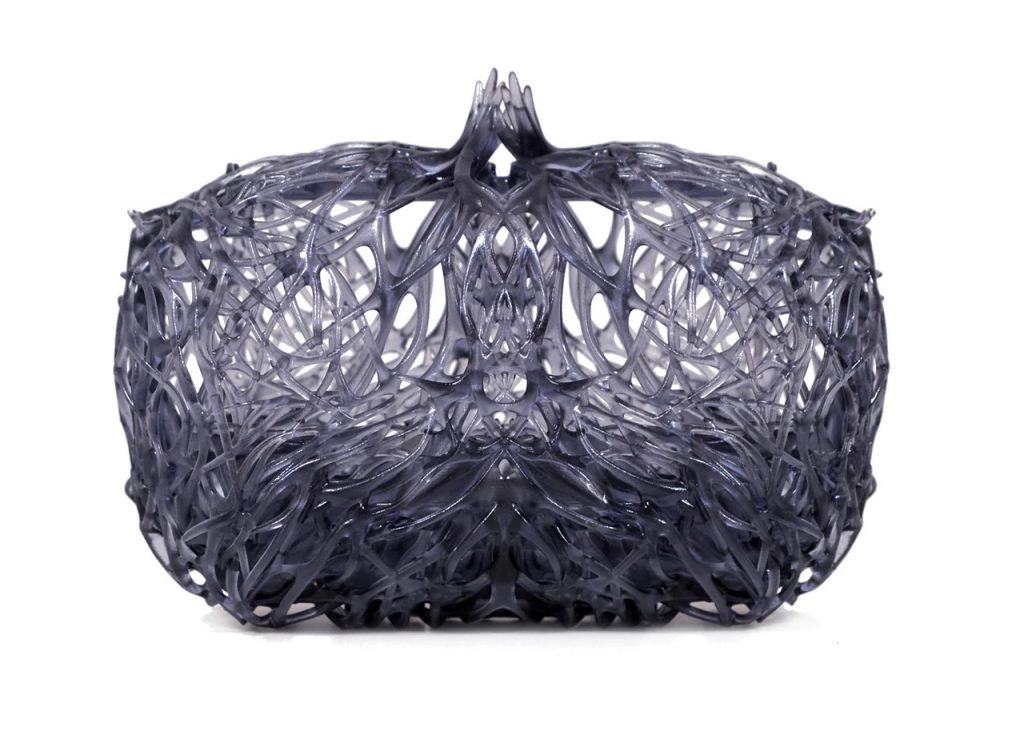
Kelp Mini Clutch by Julia Koerner
Biomimicry is at the heart of innovative design, as exemplified by the work of award-winning Austrian designer Julia Koerner. In her latest innovation, she has created the Kelp Mini Clutch, a striking 3D-printed bag made from bioplastics and inspired by the organic forms of kelp. Launched at MQ Vienna Fashion Week 2022, the clutch reflects Koerner’s commitment to biomimicry, drawing from the intricate structures of kelp found along California’s Malibu coastline.
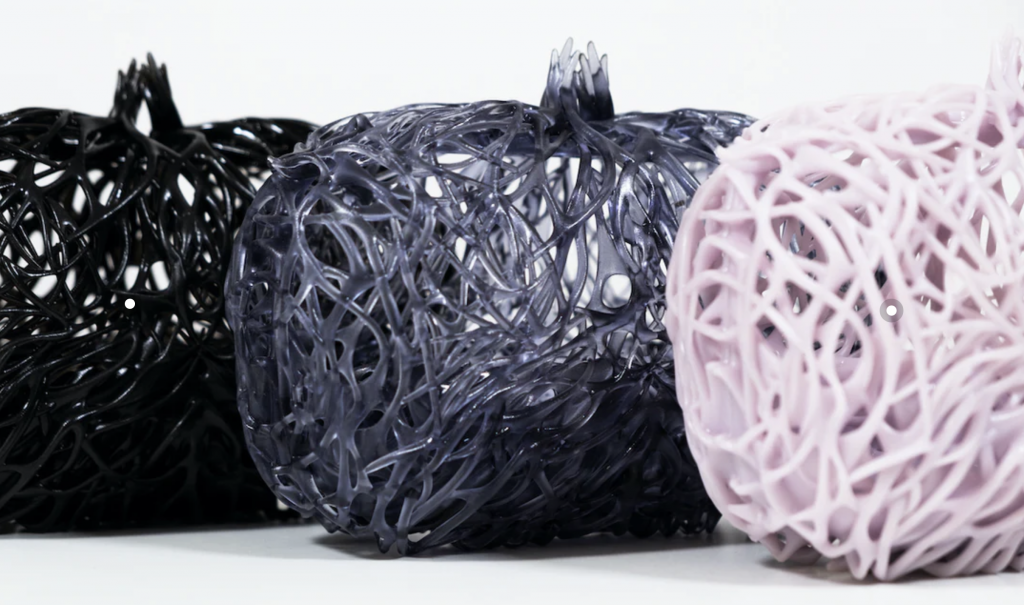
Kelp Mini Clutch by Julia Koerner
The design process involved analyzing and 3D-scanning naturally dried kelp, allowing Koerner to develop a unique geometric form that features strategic voids for visual appeal and reduced weight. Each component of the clutch, from the clasp to the hinge, is crafted from a single plant-based material, showcasing the potential of sustainable design. The resulting clutch comes in midnight blue, slate and mauve.
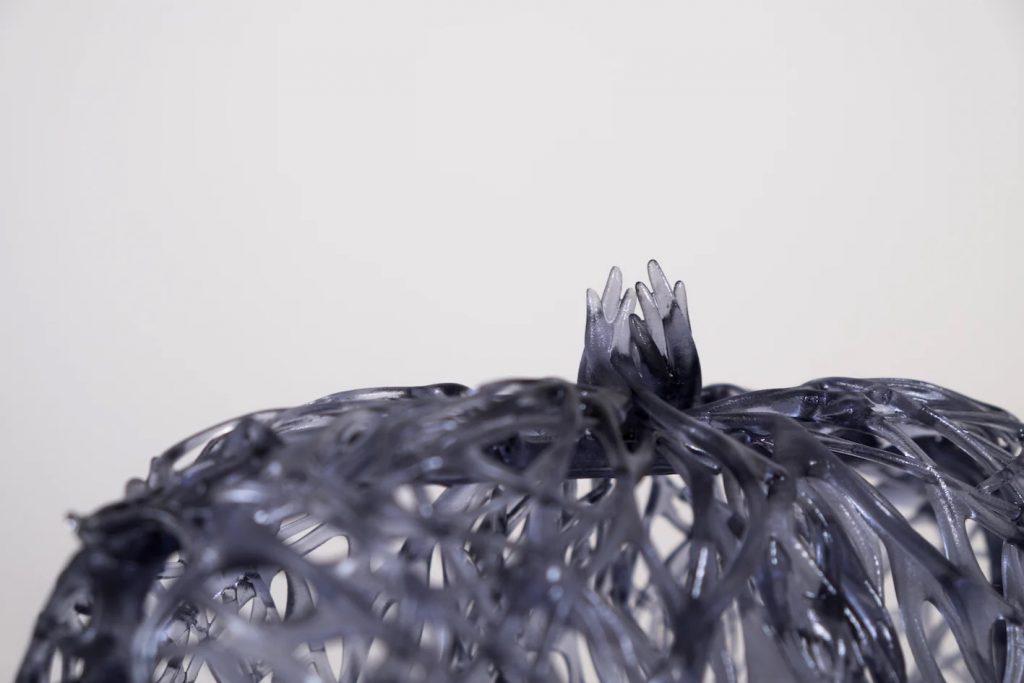
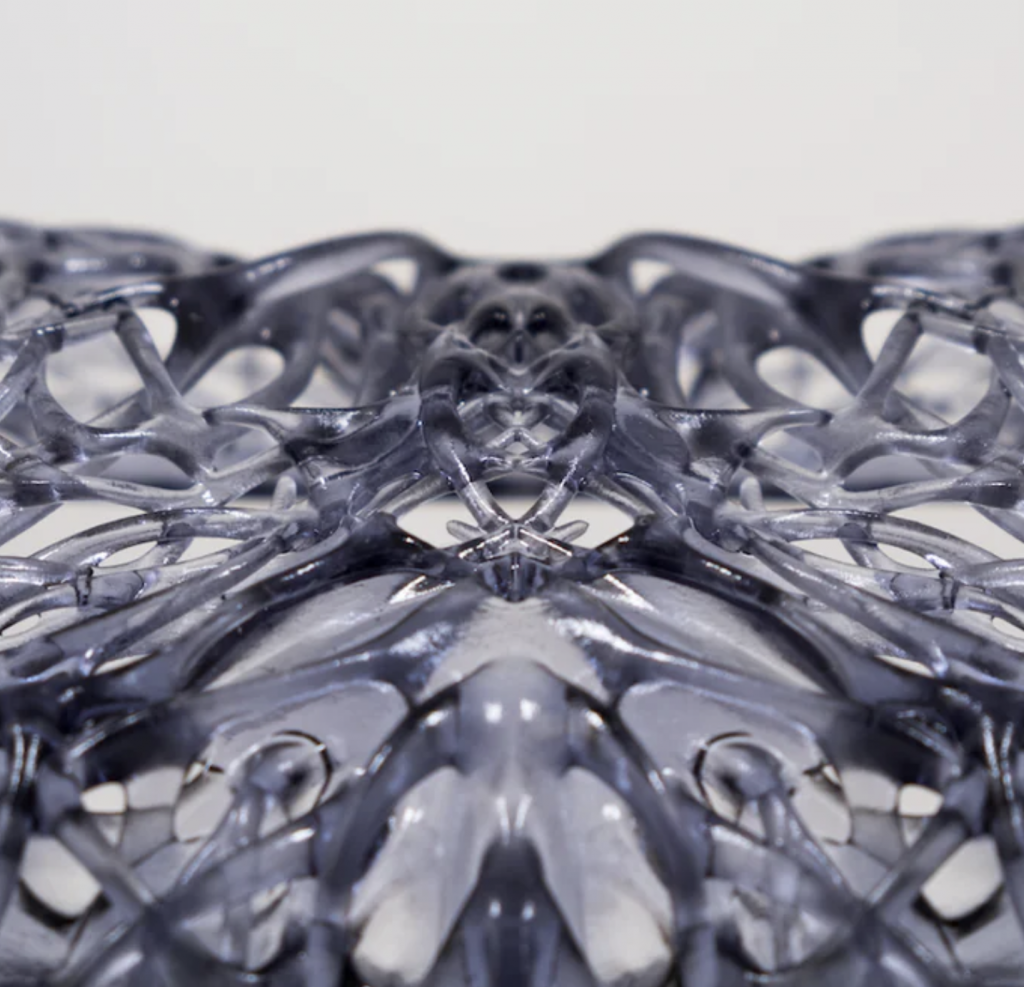
Kelp Mini Clutch by Julia Koerner
Koerner’s design brand JK3D, which is based between Vienna and Los Angeles, 3D-prints the bags to order yet can produce a clutch in one day, which enables the team to be agile and also customise clutches with initials or other personalisation.
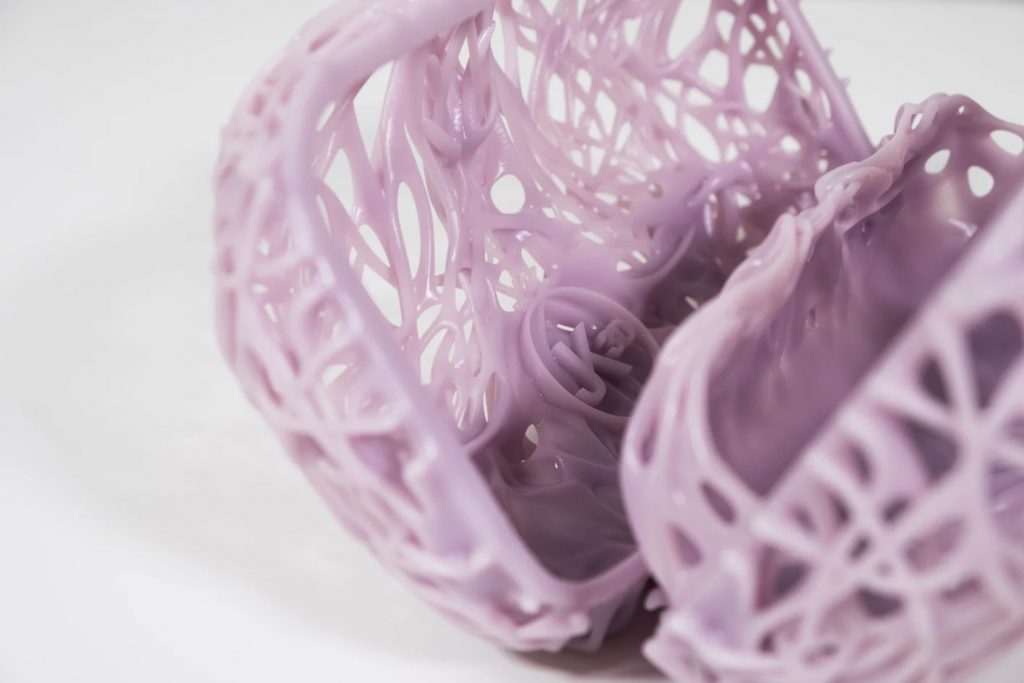
Kelp Mini Clutch by Julia Koerner
The desigener aims to redefine fashion through 3D printing, enabling customization and complex geometries while promoting eco-friendly materials sourced from renewable resources like corn and soybeans. As she asserts, “The future of fashion is 3D-printed,” emphasizing a new era of manufacturing that prioritizes innovation, sustainability, and personal expression.
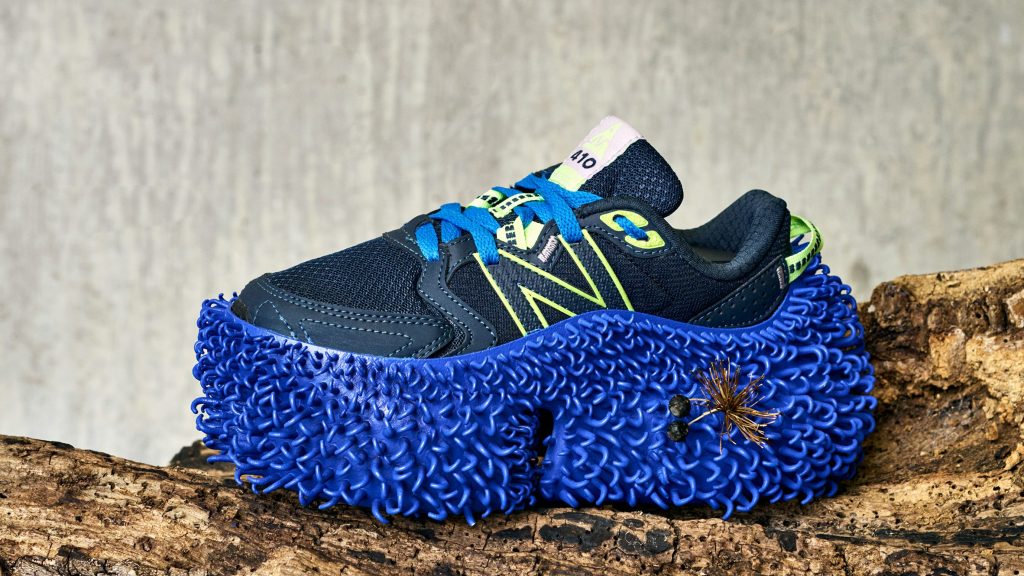
Rewild the Run by Kiki Grammatopoulos
While Koerner’s Kelp Mini Clutch utilizes bioplastics and 3D printing to mimic the organic forms of kelp, Central Saint Martins graduate Kiki Grammatopoulos takes a bold step further with her project Rewild the Run, which aims to transform urban environments through fashion and sport.
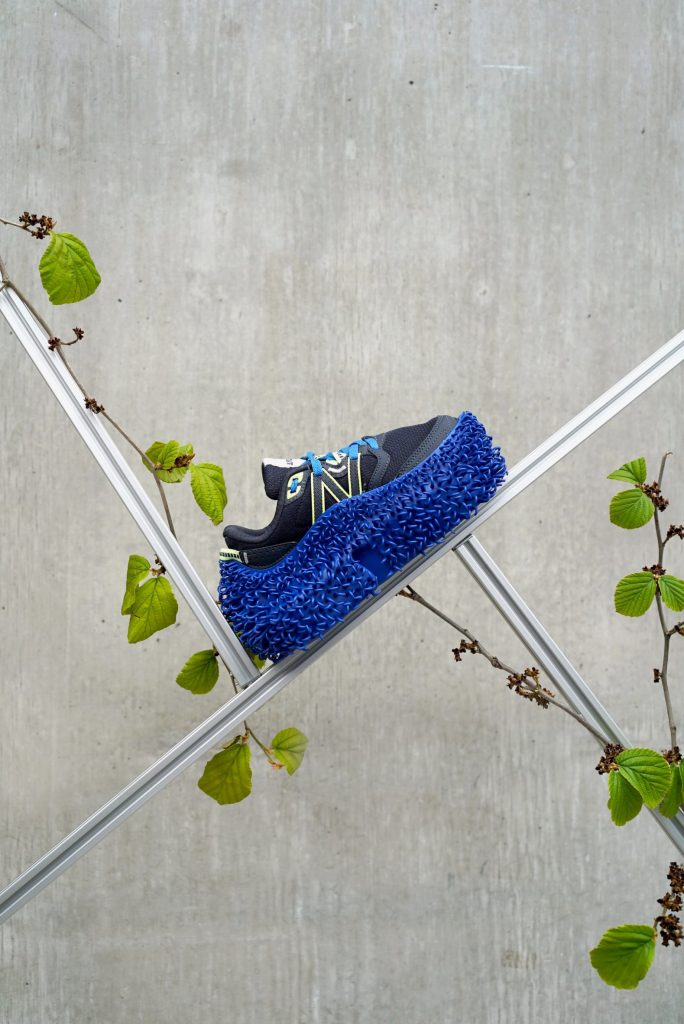
Rewild the Run by Kiki Grammatopoulos
Grammatopoulos designed a chunky, bristly running shoe outsole that engages with the process of rewilding—an ecological restoration approach that seeks to revive natural ecosystems. Her sneaker design features a densely packed surface of tiny hooks, inspired by the natural phenomenon of epizoochory, where seeds attach to animals for dispersal. By emulating the cocklebur and grapple plant, her outsole effectively grips dirt and plant matter as the wearer runs, facilitating the spread of seeds in urban landscapes.
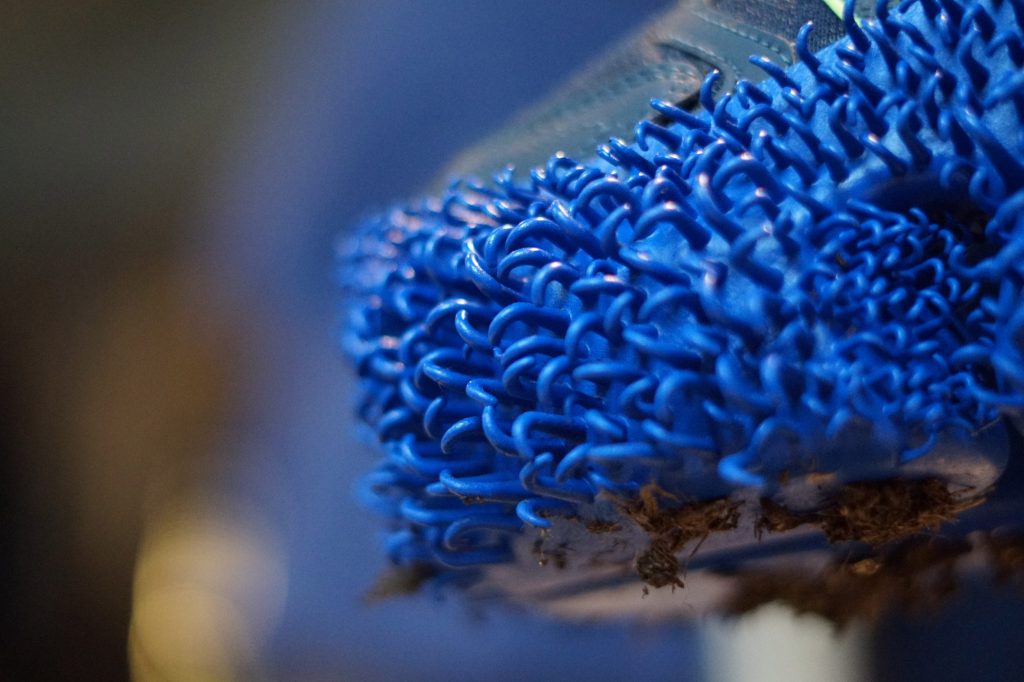
Rewild the Run by Kiki Grammatopoulos
The design is not only functional but also symbolic, as it draws inspiration from keystone species like the bison, whose hoofprints create pathways for other species. Grammatopoulos envisions her footwear as a tool for reconnecting urban dwellers with nature, urging individuals to rethink their relationship with the wild. Through her prototype, which is modeled to fit over a standard New Balance trail running shoe, she explores how sports can serve as a medium for ecological engagement, encouraging a radical transformation in how cities coexist with biodiversity.
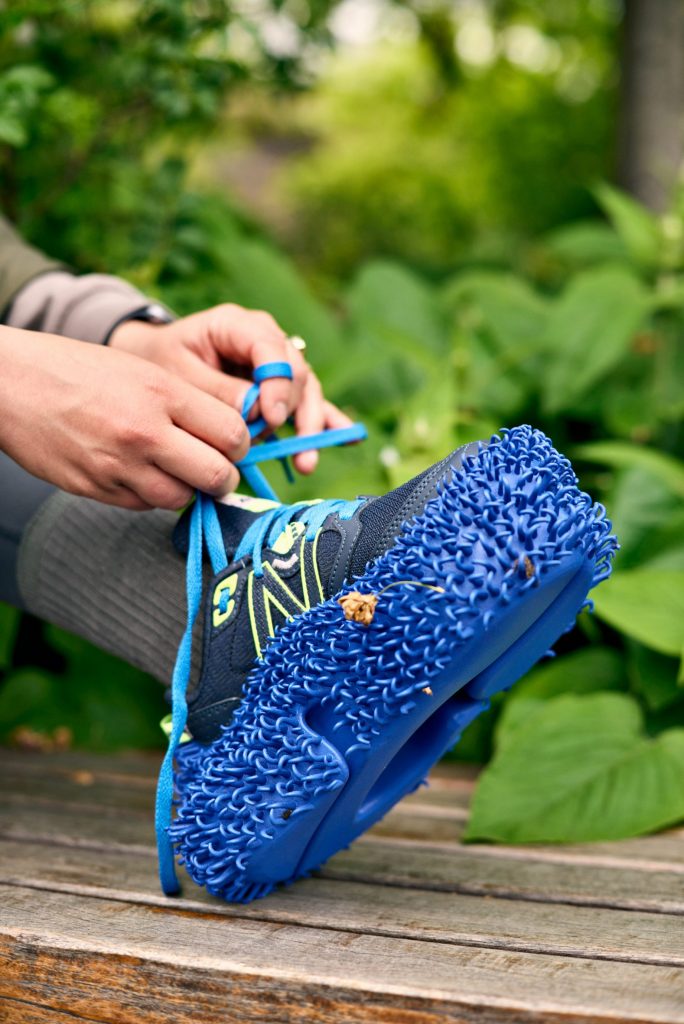
Rewild the Run by Kiki Grammatopoulos
Currently, she is testing her designs with the London-based running community Run the Boroughs, which she says is allowing her to observe the effectiveness of sport as a vehicle to rewild urban environments.
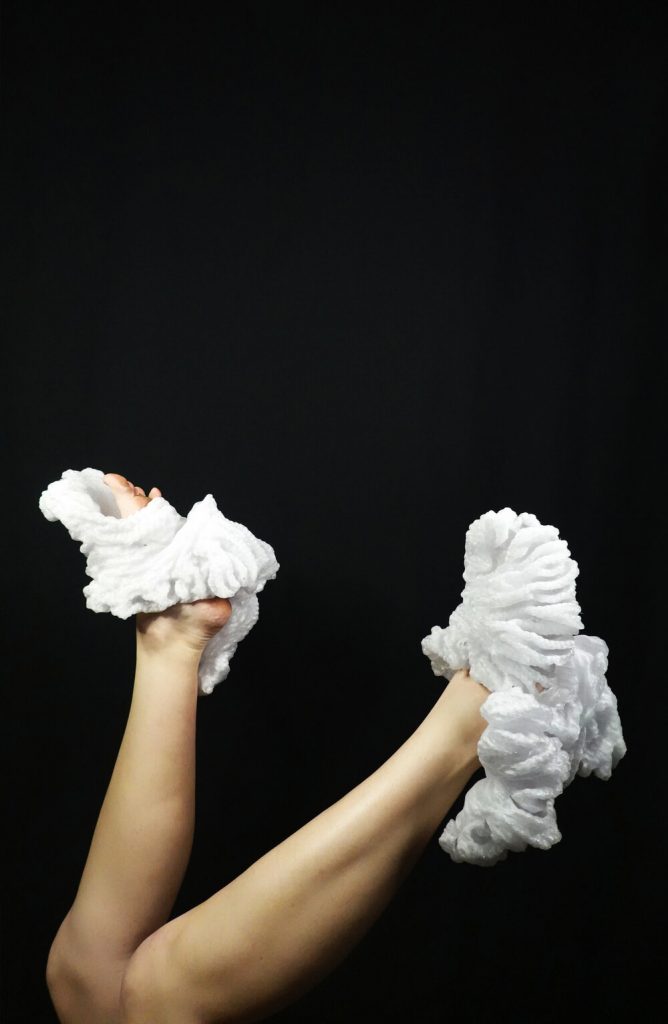
Beyond Biomimicry by Kate Reed (also header image)
Kate Reed is a Boston-based designer building wearable technology. Her project, Beyond Biomimicry, presents a groundbreaking approach to design that seeks to decenter the human perspective, allowing nature to take the lead as the designer. This collection of ecologically empowered wearable technology is grown around the human body, challenging conventional notions of how we interact with our environment. By employing algorithms that simulate natural growth patterns, Reed’s work demonstrates how living organisms can adapt and flourish even in unconventional settings, such as directly on the human form.
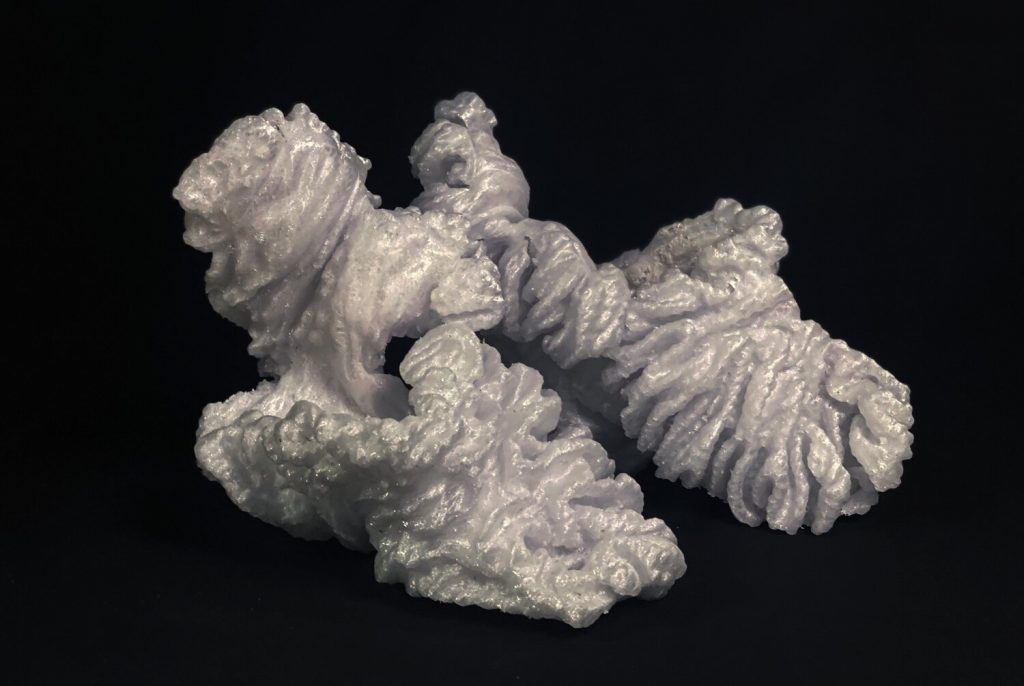
Beyond Biomimicry by Kate Reed
One standout piece, the Root shoe, exemplifies this philosophy through its design inspired by differential growth—the natural process that causes parts of a plant to grow at varying rates. This results in an organic form that hugs the foot, mimicking the curling of mushrooms. Another innovative creation, Crystal Interfaces, showcases an electronic interface made from conductive crystals that respond to touch. This interface can dissolve and regrow, promoting sustainability by minimizing waste.
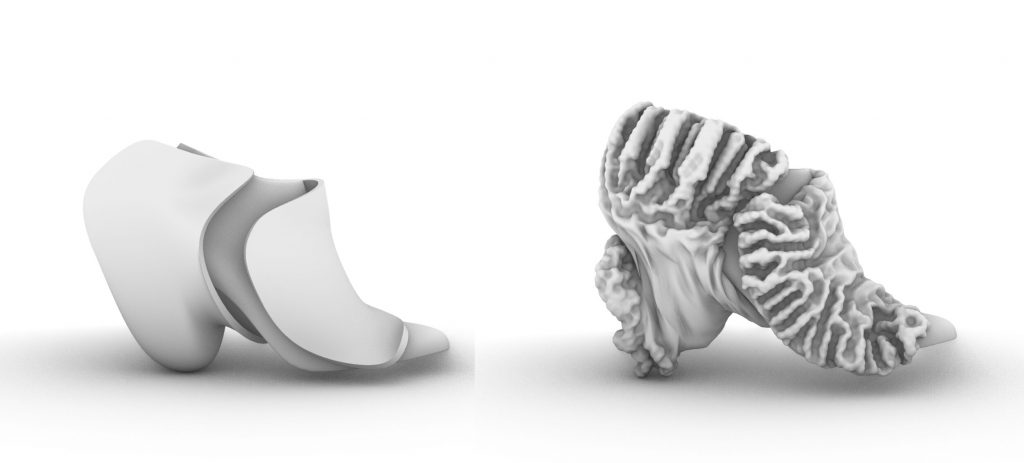
Beyond Biomimicry by Kate Reed
Reed’s vision extends beyond mere aesthetics; it embodies a call for ecological equality and interspecies collaboration. By integrating living organisms, such as slime mold, into her designs, Reed emphasizes the importance of working with nature rather than imposing human desires upon it. In her view, a multi-species future requires us to welcome the natural world into our technological advancements, creating a harmonious balance that respects both the planet and its inhabitants.
Beyond Biomimicry serves as a vital exploration of how our relationship with technology can evolve, emphasizing that the future of design must be rooted in a deep understanding and appreciation of the ecosystems we inhabit.
All these works highlight the potential of biomimicry to inspire sustainable innovation in design, urging a shift towards products that not only serve functional needs but also foster a deeper connection to the natural world. By harnessing the principles of nature, all three designers are paving the way for a future where fashion and functionality coexist harmoniously with ecological stewardship.